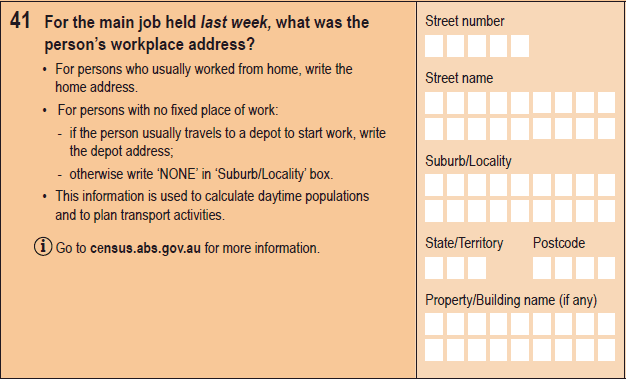WORKPLACE ADDRESS (AND JOURNEY TO WORK)
This topic collects information on the address of place of work for employed people aged 15 years and over in the week before Census Night. The question on employer's business name is also used to assist in determining a workplace address.
Workplace addresses are coded to destination zones and, when cross-classified with usual residence at Census time, create valuable data related to journey to work and daytime populations of specified areas. This data is widely used at the small area level and complements the data on method of travel to work.
BACKGROUND
The questions which enable the derivation of journey to work data have been included since the 1971 Census. Data on journey to work is derived from coding details from the address of usual residence and the address of workplace to obtain the journey origins and destinations of employed people travelling to work.
Since the 2001 Census, the workplace address of the person has been required rather than employer’s workplace address. This was designed to encourage respondents to give their actual workplace address rather than a head office. From the 2006 Census onwards, the question asking for the person’s workplace address has been expanded to include building/property name to allow for more accurate coding to a specific destination zone. If a particular response cannot be coded to a destination zone, it will be coded to a Statistical Area Level 2 (SA2). If it cannot be coded to the SA2 level, it will be assigned to a 'capital city undefined' category or a 'state undefined' category.
QUESTION
The following questions are from the paper 2016 Census Household Form.


 Print Page
Print Page
 Print All
Print All